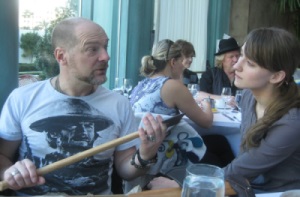A couple of years ago their was a fire that burned one of the buildings at the St. Jacob's Market to the ground.
The wooden building was quickly replaced with a soft top building as a temporary measure.
The soft top building is very nice, super bright but only a single story which displaced half of the vendors.
Last week my wife and I went to St. Jacob's and as well as all the good things to eat we got to see the completed replacement building in all it two story glory.
The market is run by Mennonites, maybe even owned by the Mennonite community and the buildings show their barn building heritage, also their practical good sense.
This replacement building is wood,the walls are wood and the beams, and roof are wood.
The posts and beams are laminated soft wood.(spruce I think) I suspect most of the wood was milled locally there is a large milling operation not far away, that cuts local timber.
The design inside is high, bright and airy.
The floor is poured concrete. The bathrooms are tiled but everything else is rough lumber that will age gracefully and be easy to repair or replace for years to come.
I am always so impressed buy the organization of the market and of course the beauty and practicality of the buildings. This new building is filled with food booths so the smell of cinnamon rolls and coffee mixed with new wood is heady.
It love to see wood instead of cement. Many of our public buildings look more like concrete bunkers than inviting living spaces.
Well done Market Management.
cheers ianw






































